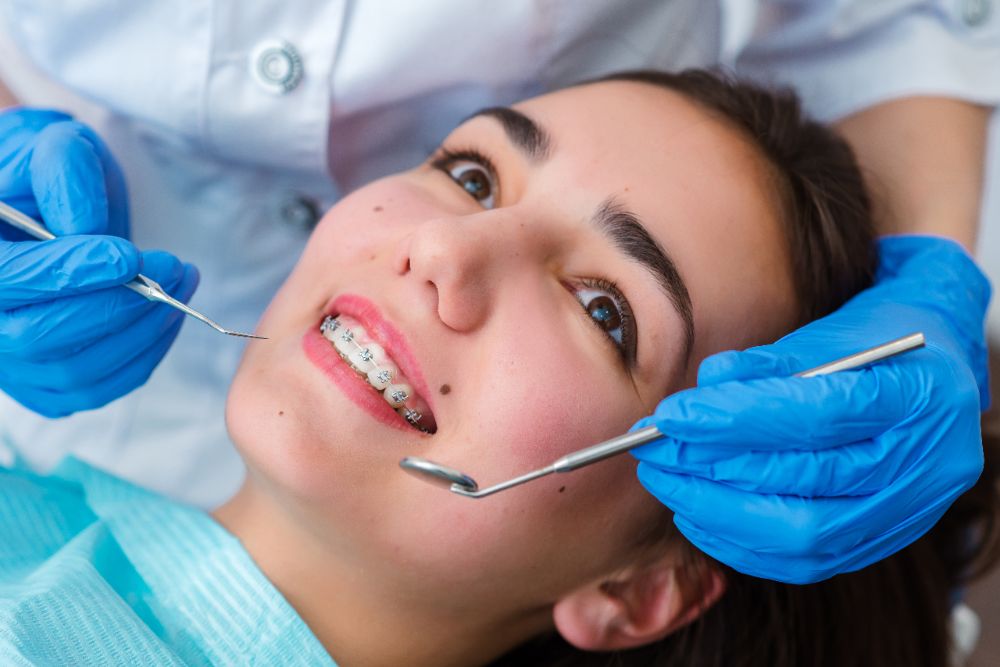Comprehensive Overview to Orthodontics Treatments for Dealing With Dental Misalignments
Recognizing the details of each procedure, including their mechanisms, advantages, and prospective disadvantages, is important in making educated choices about one's orthodontic therapy. As we navigate with the comprehensive overview to orthodontic procedures for dealing with oral imbalances, the elaborate information of each method will unravel, shedding light on the path toward a functional and harmonious oral positioning.
Orthodontic Procedures Introduction

Along with typical dental braces and clear aligners, orthodontists might likewise recommend other interventions like headwear, palatal expanders, or retainers to resolve specific positioning problems (braces). These procedures are tailored to each patient's special needs and may include a combination of therapies to attain the desired outcomes. Regular modifications and surveillance are vital parts of orthodontic treatment to make sure progression is on track and to make any essential adjustments along the means. By undertaking orthodontic treatments, clients can not only attain a straighter grin but also enhance their overall dental health and feature.
Standard Dental Braces: How They Function
When taking into consideration orthodontic therapies for oral imbalances, traditional dental braces stand out as a tried and true technique for dealing with teeth positioning. Traditional dental braces consist of brackets, cords, and bands that work with each other to apply continual pressure on the teeth, progressively relocating them right into the preferred alignment.
As stress is applied to the teeth with the braces, the bone surrounding the teeth is improved to sustain the new tooth placements. Individuals will require routine modifications at the orthodontist's office to make certain the dental braces continue to apply the right stress for effective teeth movement.
Undetectable Aligners: Benefits And Drawbacks
These clear, customized trays are essentially unseen when put on, making them an attractive alternative for individuals seeking an extra visually pleasing orthodontic therapy. Clients can eliminate the aligners prior to consuming or brushing their teeth, minimizing the danger of food getting stuck in the device and simplifying the cleansing procedure.

Surgical Orthodontic Options
Surgical treatments in orthodontics present practical choices for addressing intricate oral imbalances that may not be properly solved with traditional orthodontic treatments. While undetectable aligners and typical braces can remedy numerous orthodontic issues, certain instances need surgical intervention to achieve ideal results. Surgical orthodontic options are typically advised for extreme malocclusions, significant jaw disparities, and instances what dentist where the underlying bone structure requires alteration to attain appropriate placement.
One common surgical orthodontic treatment is orthognathic surgical treatment, which includes rearranging the jaws to deal with useful problems such as difficulty speaking or chewing. This surgical procedure is frequently carried out in cooperation with an orthodontist who helps line up the teeth before and after the procedure. Surgical orthodontics might also include treatments to subject impacted teeth, remove excess periodontal tissue, or reshape the jawbone to create a much more unified facial account.
Prior to thinking about surgical orthodontic alternatives, people undertake a detailed assessment to identify the requirement and potential advantages of such interventions. cumming aligners. While surgical procedure may seem challenging, it can substantially improve both the feature and aesthetics of the smile in cases where standard orthodontic treatments fall short
Retainers and Post-Treatment Care

Failure to conform with post-treatment treatment guidelines can result in relapse, where the teeth slowly relocate back towards their original settings. Constant retainer wear, good oral health, and routine dental exams are necessary for keeping the results accomplished through orthodontic surgical procedure and making sure the long-lasting security of the fixed oral alignment.
Final Thought
In conclusion, orthodontic treatments provide various alternatives for remedying dental misalignments. Surgical orthodontic alternatives are readily available for extra serious misalignments. On the whole, orthodontic treatments can successfully boost dental health and aesthetic look.
As we navigate via the extensive overview to orthodontic treatments for correcting dental misalignments, the detailed details of each approach will unfold, losing light on the path towards a functional and harmonious oral placement. Your Domain Name - invisalign
One of the most common orthodontic therapies is the usage of dental braces, which consist of metal braces and cords that use mild pressure to gradually shift teeth right into the wanted placement.When thinking about orthodontic therapies for dental misalignments, typical dental braces stand out as a tried and true method for dealing with teeth positioning. Additionally, invisible aligners might not be appropriate for intricate orthodontic concerns that require more substantial teeth activity, as they are commonly recommended for mild to have a peek at these guys moderate cases. Retainers are tailor-made orthodontic devices developed to hold teeth in their dealt with positions after the conclusion of orthodontic treatment.